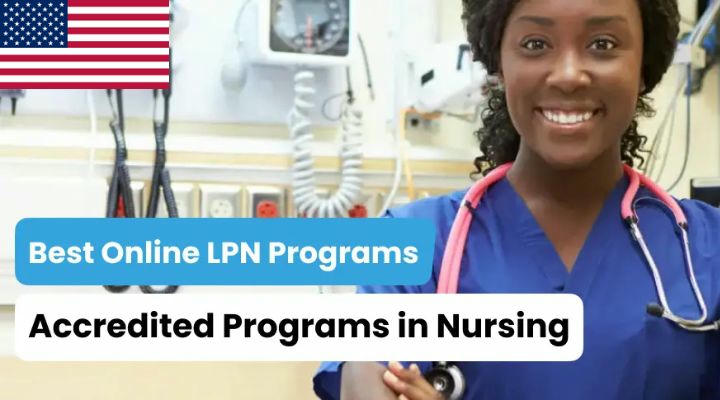Government-supported LPN Training|Lpn Program
As demand for nursing professionals continues to rise across the United States, state governments and healthcare employers are providing more opportunities for individuals to enter the Licensed Practical Nurse (LPN) field. Through policy support, educational partnerships, and employer-backed programs, many individuals are gaining the skills and credentials needed to start meaningful careers in healthcare. This article provides a comprehensive overview of current LPN training support, certification steps, job prospects, and recommended learning paths for various age groups.

1️⃣ Growing Demand for LPN Positions
The U.S. Bureau of Labor Statistics (BLS) projects that employment for LPNs will increase by around 5% by 2032. This growth is faster than the average for many other occupations, driven by an aging population and increasing demand for healthcare services. Facilities with the greatest need for LPNs include:
- Nursing homes
- Long-term care and rehabilitation centers
- Home healthcare agencies
- Outpatient clinics
This rising demand has encouraged many states to expand access to LPN education and training.
2️⃣ Government and Employer Support for Training
Government agencies and healthcare employers offer various forms of assistance to help individuals pursue LPN certification:
Government Programs
Kansas Nursing Service Scholarship: Provides tuition assistance in exchange for a commitment to work at healthcare facilities in Kansas.
Workforce Innovation and Opportunity Act (WIOA) Grant: Available for eligible applicants, including those who are unemployed or from low-income households.
GI Bill®: Allows veterans and eligible family members to apply benefits toward LPN tuition and receive living stipends while enrolled.
Employer-Sponsored Programs
- Genesis HealthCare: Offers partial tuition reimbursement, signing bonuses, and guaranteed job placement upon certification.
- BAYADA: Provides paid training that combines classroom instruction and clinical experience.
- BrightSpring Health: Runs apprenticeship programs that include paid training and employment placement after program completion.
These support programs help reduce financial burdens and provide a clearer path to employment in healthcare.
3️⃣ Certification Process
The process of becoming an LPN generally follows a consistent path nationwide:
- Complete an approved LPN program at a recognized school, usually taking 9 to 12 months.
- Pass the National Council Licensure Examination for Practical Nurses (NCLEX-PN).
- Apply for licensure through the relevant state board, including any required background checks or health record submissions.
Details may vary slightly by state, so it is important to check with the local board of nursing for specific requirements.
4️⃣ Flexible Learning Options
LPN training programs are designed to accommodate different personal and professional circumstances. Options include:
- Hybrid learning: A mix of online coursework and in-person clinical training.
- Full-time or part-time schedules: Suitable for learners balancing study with other responsibilities.
- Accelerated pathways: Designed for those who want to complete certification within a focused 9- to 12-month period.
Such flexibility allows individuals from various backgrounds to pursue LPN qualifications without disrupting other aspects of life.
5️⃣ Age-Based Training Pathways (Reference Groups)
| Age Range (Reference) | Recommended LPN Training Focus |
|---|---|
| 18–25 | Accelerated certification and employer-sponsored programs |
| 26–35 | Hybrid LPN programs with job placement assistance |
| 36–50 | Flexible training options with remote-friendly job roles |
| 51–65 | Online programs and community-sponsored training |
| 65+ | Accessible healthcare pathways with part-time schedules |
This structure ensures that individuals of all ages can enter the healthcare field with proper support and guidance.
6️⃣ Real Learner Journeys
👩👦 Case Study: Career Change After Job Loss
Location: Grand Rapids, MI
Maria, a 40-year-old single mother with no healthcare background, joined a local LPN program through a community college and healthcare partnership. After 10 months of weekend classes and clinical practice, she passed the NCLEX-PN and now works at a rehabilitation center earning over $55,000/year.
"The coursework was challenging, but with clear goals and hands-on training, I finally built a sustainable career."
🎖️ Case Study: Veteran Reintegration
Location: San Antonio, TX
Derrick, a former Navy serviceman, used his GI Bill benefits to join a veteran-specific LPN training program. After earning his certification, he began working in a surgical recovery ward with an annual income of $62,000.
"Transitioning to nursing gave me a renewed sense of service."
7️⃣ Take the First Step
Whether you’re entering the workforce, switching careers, or returning after a long break, LPN training backed by government or employer support offers a reliable pathway. With many learners earning wages during training and securing jobs before graduation, this route provides both financial security and long-term career potential.
Explore local opportunities, select a supported training program, and begin your healthcare journey with confidence.



